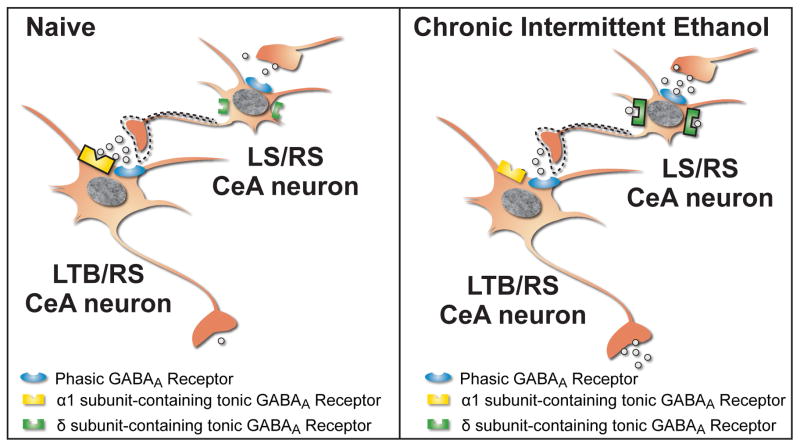Figure 8.
Schematic illustrating local cell type-specific phasic and tonic GABAA receptor transmission in CeA neurons from naïve (left panel) and chronic intermittent ethanol (CIE, right panel) rats. In naïve rats (left panel), Low Threshold Bursting (LTB) and some Regular Spiking (RS) CeA neurons possess an ongoing tonic conductance that is mediated by α1 subunit-containing tonic GABAA receptors located in or near the synaptic cleft. Late Spiking (LS) and a separate population of RS neurons do not possess an ongoing tonic conductance but do possess the potential for tonic conductance that is mediated by extrasynaptic δ subunit-containing tonic GABAA receptors that can be stimulated by elevations in ambient GABA or acute ethanol. Dashed lines indicate a proposed synaptic connection between LS/RS and LTB/RS neurons that may explain the differential effects of acute ethanol on CeA neuron firing. In CIE rats (right panel), the tonic conductance observed in LTB/RS CeA neurons from naïve rats is lost resulting in disinhibition and increased synaptic output (GABA release). In contrast, an ongoing tonic conductance is now present in LS/RS CeA neurons resulting in decreased synaptic output (GABA release).

